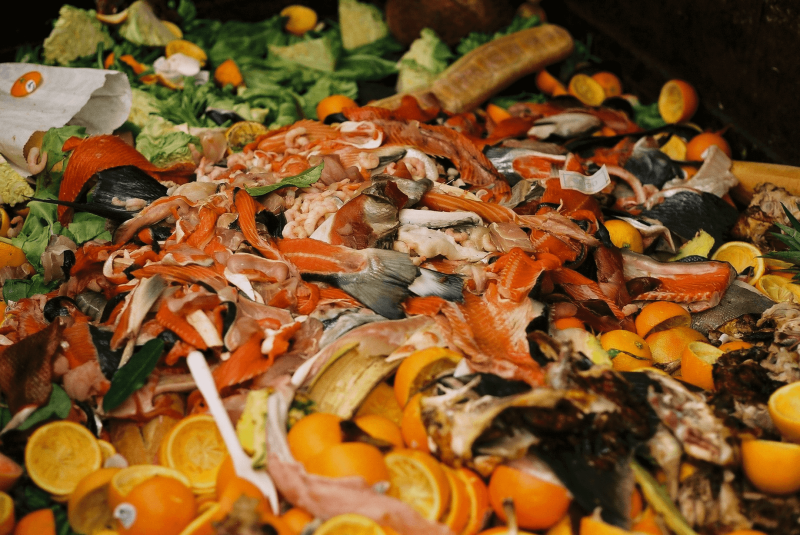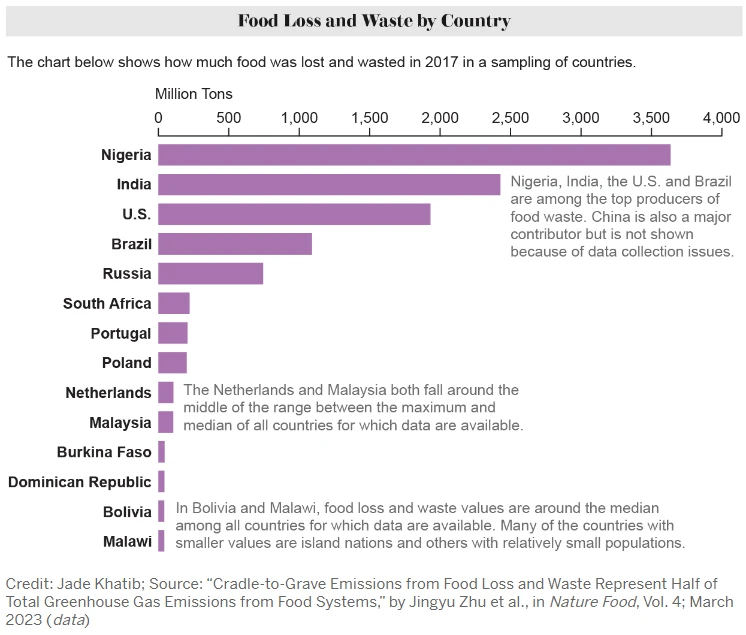Climate change impact of food waste: ⅓ of our food is wasted contributing to half of agriculture’s carbon footprint
Climate change impact of food waste: ⅓ of our food is wasted contributing to half of agriculture’s carbon footprint


Around a third of human-generated greenhouse gas emissions comes from the global food system, and lost or wasted food is known to contribute some amount—but it has never been clear to exactly what degree. Now, by following specific foods through their entire life cycle, researchers have determined just how much this wasted food adds to emissions through phases such as harvest, transportation and disposal.
For a study in Nature Food, Xunchang Fei of Singapore’s Nanyang Technological University and his colleagues used 164 countries’ food supply data from 2001 to 2017 to estimate emissions across 54 food commodities and four categories: cereals and pulses; meat and animal products; vegetables and fruits; and root and oil crops.

Roughly a third of food is lost during harvest, storage and transportation or is wasted by consumers. The team found this food was responsible for greenhouse gases equivalent to 9.3 billion metric tons of carbon dioxide—about half the global food system’s total emissions—in 2017. Four countries (China, the U.S., India and Brazil) contributed 44.3 percent, mainly owing to their dietary habits and large populations. Of the four food categories, meat and animal products were the source of almost three quarters of emissions that occurred during the supply-chain phase for food that was ultimately lost.
This is an excerpt. Read the original post here

 | Videos | More... |

Video: Nuclear energy will destroy us? Global warming is an existential threat? Chemicals are massacring bees? Donate to the Green Industrial Complex!
 | Bees & Pollinators | More... |

GLP podcast: Science journalism is a mess. Here’s how to fix it

Mosquito massacre: Can we safely tackle malaria with a CRISPR gene drive?

Are we facing an ‘Insect Apocalypse’ caused by ‘intensive, industrial’ farming and agricultural chemicals? The media say yes; Science says ‘no’
 | Infographics | More... |

Infographic: Global regulatory and health research agencies on whether glyphosate causes cancer
 | GMO FAQs | More... |

Why is there controversy over GMO foods but not GMO drugs?

How are GMOs labeled around the world?

How does genetic engineering differ from conventional breeding?
 | GLP Profiles | More... |

Alex Jones: Right-wing conspiracy theorist stokes fear of GMOs, pesticides to sell ‘health supplements’




 Viewpoint — Fact checking MAHA mythmakers: How wellness influencers and RFK, Jr. undermine American science and health
Viewpoint — Fact checking MAHA mythmakers: How wellness influencers and RFK, Jr. undermine American science and health Viewpoint: Video — Big Solar is gobbling up productive agricultural land and hurting farmers yet providing little energy or sustainabilty gains
Viewpoint: Video — Big Solar is gobbling up productive agricultural land and hurting farmers yet providing little energy or sustainabilty gains Fighting deforestation with CO2: Biotechnology breakthrough creates sustainable palm oil alternative for cosmetics
Fighting deforestation with CO2: Biotechnology breakthrough creates sustainable palm oil alternative for cosmetics Trust issues: What happens when therapists use ChatGPT?
Trust issues: What happens when therapists use ChatGPT? California, Washington, Oregon forge immunization alliance to safeguard vaccine access against federal undermining
California, Washington, Oregon forge immunization alliance to safeguard vaccine access against federal undermining 30-year-old tomato line shows genetic resistance to devastating virus
30-year-old tomato line shows genetic resistance to devastating virus The free-range chicken dilemma: Better for birds, but with substantial costs
The free-range chicken dilemma: Better for birds, but with substantial costs ‘You have to treat the brain first’: Rethinking chronic pain with Sanjay Gupta
‘You have to treat the brain first’: Rethinking chronic pain with Sanjay Gupta
